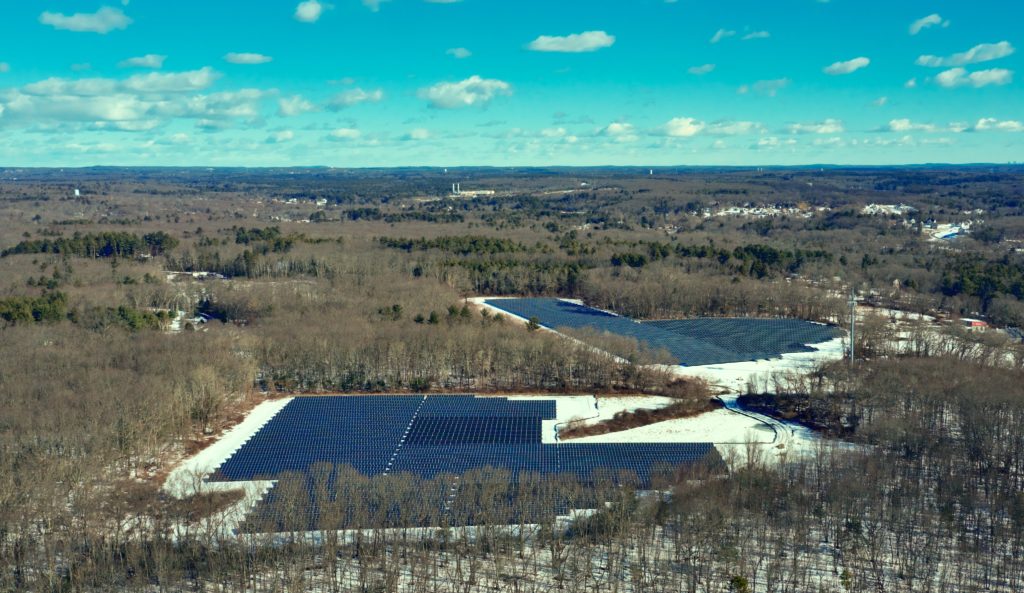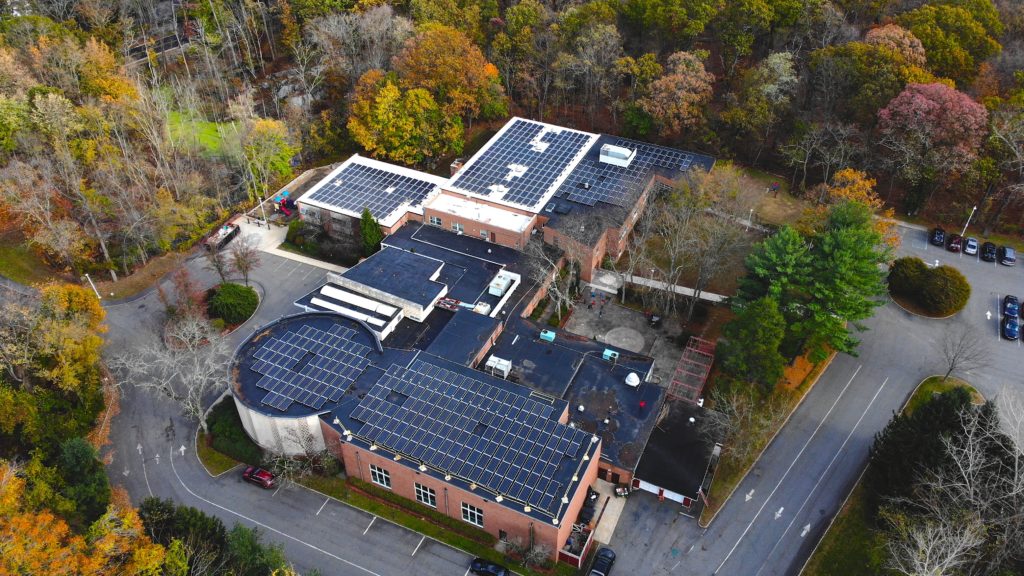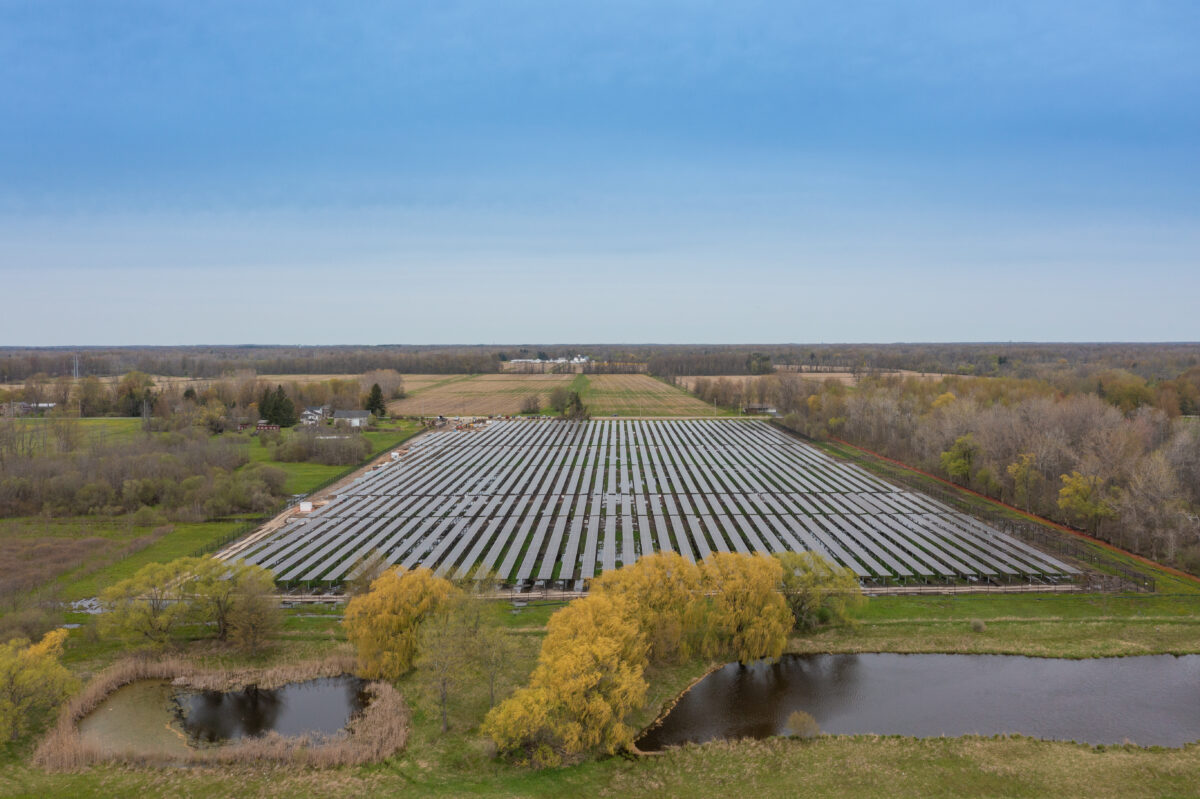How to Start a Community Solar Project as a Commercial Property Owner
May 5, 2021Commercial and industrial real estate owners often face barriers to installing a solar energy system on their own properties. Sometimes the property is unsuitable for solar, or it’s difficult to determine how to divide the benefits among tenants.
Community solar offers an alternative that makes the benefits of solar possible for more people, including property owners, tenants, and the communities themselves. Forming a relationship with a renewable energy partner can help you take advantage of underutilized space on your property, such as rooftops, while overcoming additional barriers such as funding, building, and operating solar systems.

What is Community Solar?
A community solar project is defined as a local solar facility shared by multiple community subscribers who receive credit on their utility bills for a share of the power produced. Projects are often located on underutilized land, brownfields, or even local farms or ranches, providing landowners with an additional revenue stream by leasing portions of their land.
Rooftops of C&I buildings and large, multi-tenant occupied buildings are also great candidates for community solar projects. As a CRE owner, you may be sitting on several properties that would make excellent sites for a rooftop community solar project.
While there are many models of community solar today, the underlying principle remains the same: shared access to a clean energy resource that’s locally produced.
How to Determine If Your Property is Right for Community Solar
As solar continues its meteoric rise in the U.S., community solar grows along with it. The United States plans to add 54.5 gigawatts (GW) of new utility-scale electric-generating capacity to the power grid, and 54% of that capacity will come from solar, according to a recent report by the U.S. Energy Information Administration (EIA). 2023 is also expected to see the most new utility-scale solar capacity added in a single year, making up for decreased growth in 2022 due to supply chain bottlenecks and pandemic-related challenges.
At last count, 39 states have community solar projects, and there are good reasons why. Community solar expands access to the environmental and economic benefits of solar and, for the commercial and industrial real estate industry, community solar projects can add tremendous value to your overall energy strategy. The solar industry expects to see 11% growth from 2024 to 2028 as government incentives make more of an impact and local programs are fully developed, according to the Solar Energy Industry Association.
Community solar can benefit your organization’s bottom line while helping achieve your organization’s ESG goals. But how can your organization participate in this growing phenomenon in a cost-effective way?
Determining if Your Property is a Candidate for Community Solar
Rooftop solar is a viable option for companies interested in demonstrating their commitment to environmental sustainability. Yet moving to renewable energy can be difficult to accomplish without substantial financial and organizational resources. Community solar makes renewable energy possible for more organizations than ever before.
There are a multitude of ways to participate in community solar. Your company can host the array and be its principal off-taker (or subscriber) or you can be a host only — providing tenants and community members the option to become subscribers. You can even choose to subscribe to another community solar project that isn’t hosted on your property. The options are truly endless.
If your organization is truly committed to sustainability but faces obstacles with renewable energy in terms of site suitability or financing, community solar may be right for you. Building a relationship with a renewable energy partner like Catalyze makes the process affordable and scalable across an entire portfolio of properties.

How Catalyze Approaches Community Solar
When beginning community solar projects, our approach is to work directly with commercial property owners to build, own, and operate the systems on their properties, enabling them to be the principal off-taker of clean energy. We can also work with CRE owners to offer subscriptions to their tenants — a valuable amenity in a competitive real estate market — while providing a highly beneficial service to the community: local, affordable, and clean energy.
The Catalyze model opens community solar subscriptions to others in the community as well, including businesses, municipalities or homeowners who either can’t afford or don’t have the right roof for solar. In most geographic markets, subscribers to community solar projects save an average of 10% of their electricity costs, which can become even more valuable over time as utility rates escalate.
Catalyze has several community solar projects in development and under construction, and we are building more every day. In fact, two commercial solar projects were launched this past summer in New York and California. In both of these projects, we are leveraging local initiatives like the NYSERDA Clean Energy Community program and the Enhanced Community Renewables (ECR) program to provide renewable electricity to low-to-middle-income residents who have traditionally been left out of the energy transition.
Assessing Your Options When Creating a Community Solar Program
When you partner with Catalyze to realize your energy and sustainability goals through community solar or other onsite commercial and industrial renewable energy projects, you’re able to take advantage of the benefits of renewable energy without capital expenditures or the burdens of ownership and maintenance.
The award-winning Catalyze REenergyze™platform analyzes your real estate portfolio to identify properties where the addition of smart energy infrastructure will increase net operating income and create long-term value. If none of the sites in your portfolio are suitable for onsite solutions, we may be able to match your company to one of our existing community solar projects as an energy off-taker.
Contact us to see if community solar is right for your organization.

